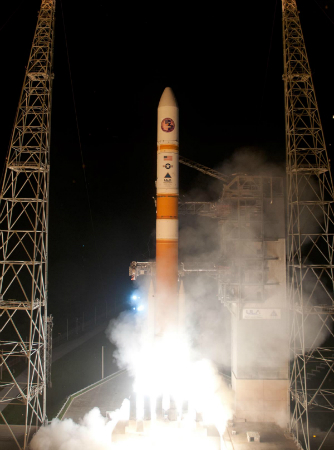 The Air Force and its industry partners launched WGS-6, the sixth Wideband Global Satellite Communications spacecraft, into orbit on Wednesday aboard a United Launch Alliance Delta IV rocket fired from Cape Canaveral AFS, Fla. The launch of the Boeing-built satellite took place at 8:29 p.m. local time, according to the service’s Aug. 7 release. Approximately 57 minutes later, satellite controllers confirmed that the spacecraft was functioning as expected, states Boeing’s release. This satellite will provide additional wideband SATCOM coverage for US military forces and foreign partners, including Australia. The latter supported the cost of WGS-6 under a partnership agreement. Over the next few months, Boeing will begin on-orbit testing of WGS-6 to verify its performance and prepare it for operational use. WGS-6 is scheduled to enter operations in early 2014, according to the Air Force. This is the second WGS launch this year, following the WGS-5 mission in May. “WGS is providing unparalleled global communications capabilities to soldiers, sailors, marines, and airmen for the United States, Australia, Canada, Denmark, Luxembourg, the Netherlands, and New Zealand,” said Charlotte Gerhart, chief of the Air Force’s Wideband SATCOM division at Los Angeles AFB, Calif.
The Air Force and its industry partners launched WGS-6, the sixth Wideband Global Satellite Communications spacecraft, into orbit on Wednesday aboard a United Launch Alliance Delta IV rocket fired from Cape Canaveral AFS, Fla. The launch of the Boeing-built satellite took place at 8:29 p.m. local time, according to the service’s Aug. 7 release. Approximately 57 minutes later, satellite controllers confirmed that the spacecraft was functioning as expected, states Boeing’s release. This satellite will provide additional wideband SATCOM coverage for US military forces and foreign partners, including Australia. The latter supported the cost of WGS-6 under a partnership agreement. Over the next few months, Boeing will begin on-orbit testing of WGS-6 to verify its performance and prepare it for operational use. WGS-6 is scheduled to enter operations in early 2014, according to the Air Force. This is the second WGS launch this year, following the WGS-5 mission in May. “WGS is providing unparalleled global communications capabilities to soldiers, sailors, marines, and airmen for the United States, Australia, Canada, Denmark, Luxembourg, the Netherlands, and New Zealand,” said Charlotte Gerhart, chief of the Air Force’s Wideband SATCOM division at Los Angeles AFB, Calif.
The U.S., South Korea, and Japan flew an unusual trilateral flight with two U.S. B-52H Stratofortress bombers escorted by two Japan Air Self-Defense Force F-2s, and two ROK Air Force KF-16 fighters—both countries’ respective variants of the F-16—July 11. That same weekend, the top military officers of the three nations…